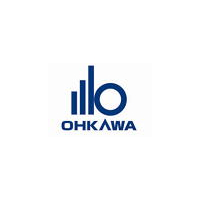1~4 item / All 4 items
Displayed results
Added to bookmarks
Bookmarks listBookmark has been removed
Bookmarks listYou can't add any more bookmarks
By registering as a member, you can increase the number of bookmarks you can save and organize them with labels.
Free membership registration
Contact this company
Contact Us Online1~4 item / All 4 items

Waste liquids containing used HFE/HFO/chlorinated solvents still contain recoverable solvents. Okawa Kogyo's solvent recovery system "OK-GREEN1" can stably recover high-quality recycled solvent simply by introducing waste liquid containing HFE/HFO/chlorinated solvents. It reliably recovers solvents from waste liquid in a condition equivalent to new solvent. The waste liquid after recovery is not difficult-to-treat fluorinated waste liquid, but can be treated as ordinary waste oil or industrial waste. It reduces waste liquid treatment costs while realizing the reuse of expensive solvents. Continuous operation is also possible by connecting it to a cleaning machine, minimizing equipment downtime. For companies that use large quantities of HFE/HFO/chlorinated solvents, we recommend adopting OK-GREEN1 from both environmental and cost perspectives. Furthermore, by integrating it into a cleaning system, it is now possible to continuously reuse the solvent while removing only the "dirt" during cleaning. [Features] ○ Recovers recycled liquid simply by introducing used waste liquid ○ Solvent recovery rate is 100% ○ Can be connected to a cleaning machine ○ Reduces industrial waste disposal costs ○ Recovered solvent can be reused with confidence
Added to bookmarks
Bookmarks listBookmark has been removed
Bookmarks listYou can't add any more bookmarks
By registering as a member, you can increase the number of bookmarks you can save and organize them with labels.
Free membership registration
◆We offer customized organic solvent cleaning machines, from manual to automatic models, tailored to your company's specifications. ◆Basket cleaning machines and in-line cleaning machines are available. ◆Cleaning experiments are also possible. ◆Compatible solvents: [Chlorinated organic solvents] ・Methylene chloride (dichloromethane, methylene chloride), etc. [Inert organic solvents] ・HFO (hydrofluoroolefin) ・HFE (hydrofluoroether)
Added to bookmarks
Bookmarks listBookmark has been removed
Bookmarks listYou can't add any more bookmarks
By registering as a member, you can increase the number of bookmarks you can save and organize them with labels.
Free membership registration
The OEL-Clean series, highly regarded for its cleaning power, allows for the precise control of organic materials deposited on metal masks through its use and the extensive know-how that accompanies it, achieving a quality that is indistinguishable from a new mask. It maximizes safety, security, environmental considerations, cleaning precision, cost-effectiveness, and productivity. The use of non-flammable solvent HFE for rinsing and drying ensures safety. The HFE solvent is also rejuvenated into new liquid through distillation and HC/HFE separation equipment, allowing for reuse. 【Features】 - Thin film masks are sensitive to thermal stress, and this is addressed by washing at room temperature to eliminate thermal stress. - With the incorporation of a distillation unit, the cleaning solution is rejuvenated into new liquid, and contaminants are condensed and discharged as a small amount of waste liquid, eliminating the need for traditional full liquid replacement. For more details, please contact us or download the catalog.
Added to bookmarks
Bookmarks listBookmark has been removed
Bookmarks listYou can't add any more bookmarks
By registering as a member, you can increase the number of bookmarks you can save and organize them with labels.
Free membership registration
This system achieves "zero water stains," "zero drying unevenness," and "zero fire risk," which were challenges with conventional IPA drying and hot air drying. Our proprietary moisture removal device constantly manages trace amounts of moisture in the HFE solvent, stabilizing drying quality. Most of the water adhering to the glass substrate and brought into the HFE water removal and drying system is discharged outside the device by specific gravity separation. Even trace amounts of moisture dissolved in the HFE solvent are reliably removed by the moisture removal device. The HFE solvent water removal and drying system quickly separates water adhering to glass and metal products after cleaning using specific gravity differences and ultrasonic action, completely preventing water stains. It enables safe, energy-efficient, and mass-production compatible precision drying processes for glass, lenses, metal parts, and other products. 【Features】 ○ Avoids fire and safety risks by not using IPA ○ Significantly reduces energy consumption required for drying and suppresses CO₂ emissions ○ Supports mass production lines by improving cleaning speed ○ Reliably removes trace amounts of moisture contained in the HFE solvent ○ Maintains "zero" water stains with a "moisture removal device (optional)" that constantly removes trace amounts of moisture For more details, please contact us or download the catalog.
Added to bookmarks
Bookmarks listBookmark has been removed
Bookmarks listYou can't add any more bookmarks
By registering as a member, you can increase the number of bookmarks you can save and organize them with labels.
Free membership registration